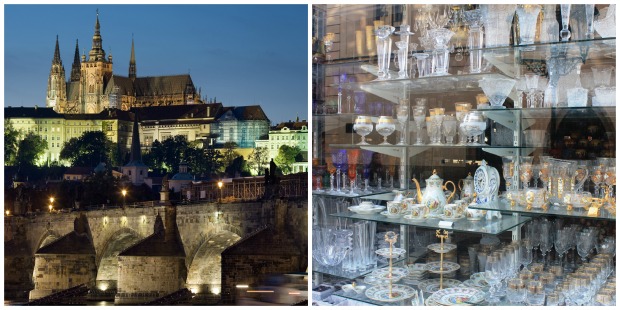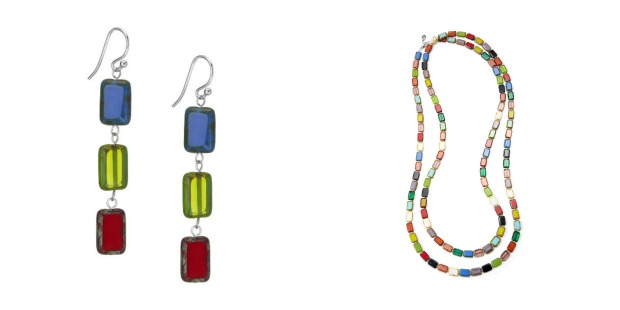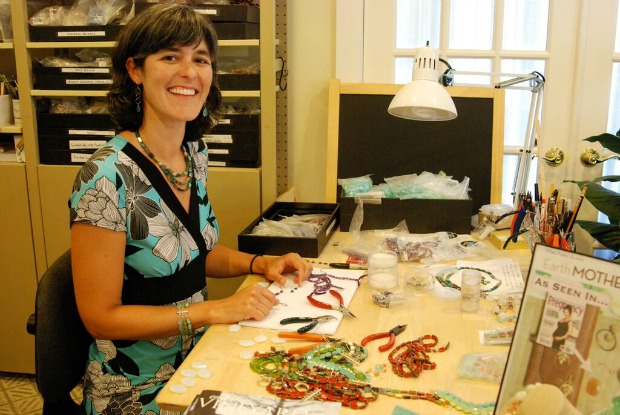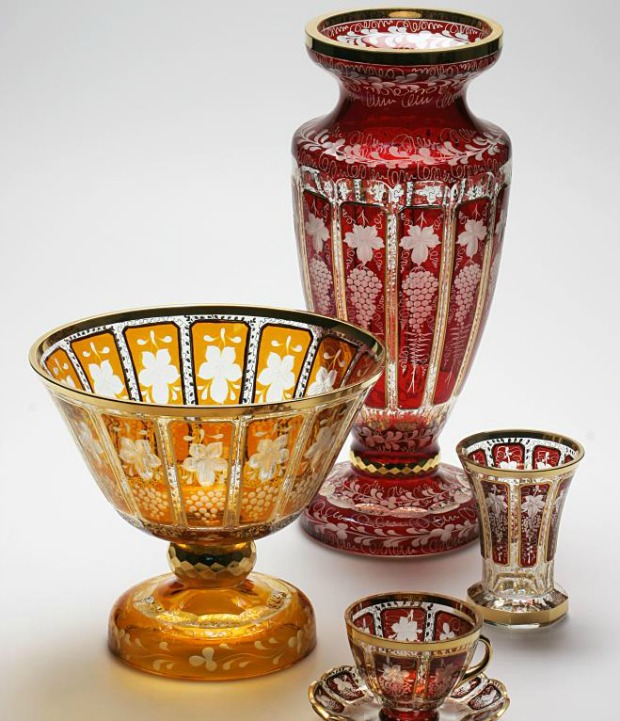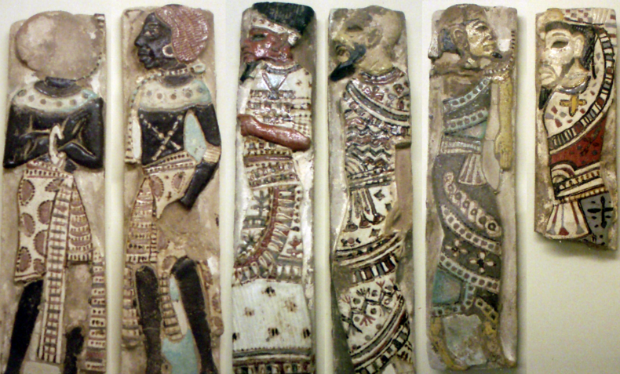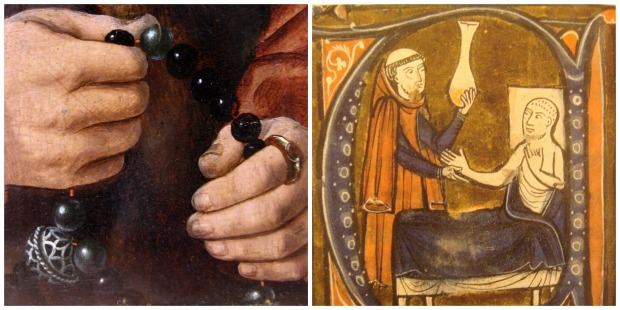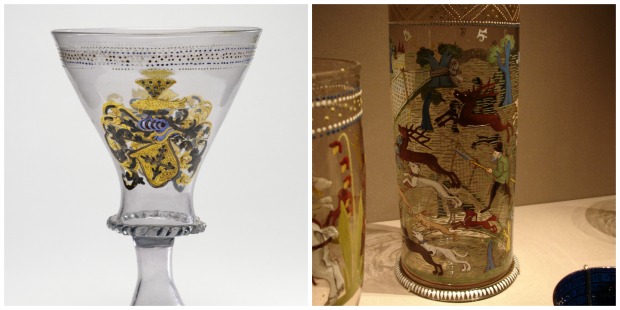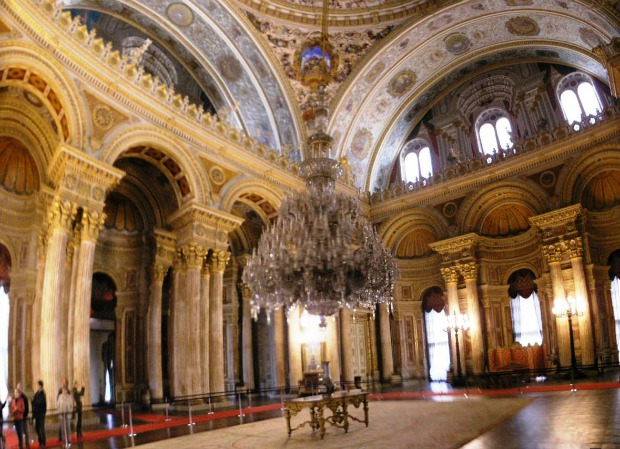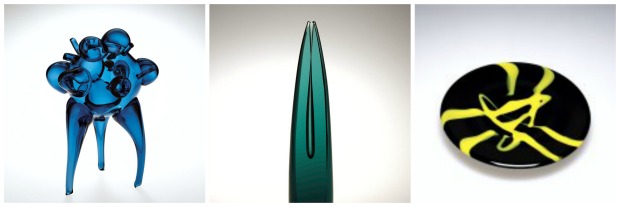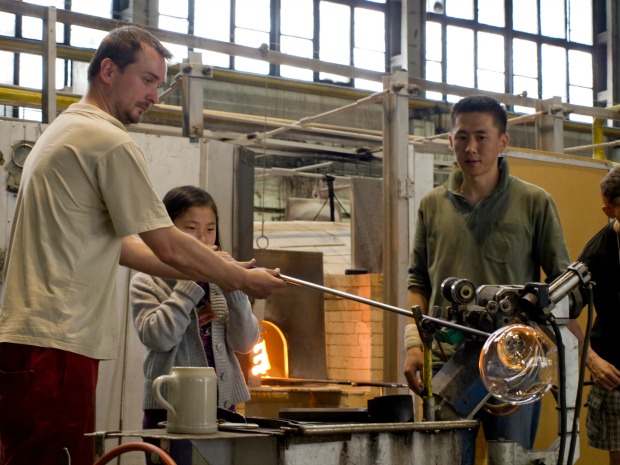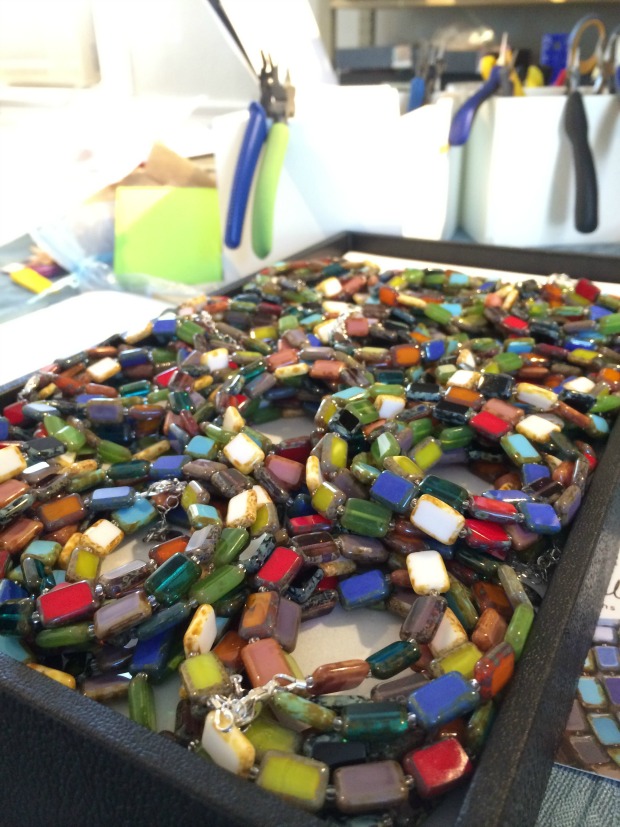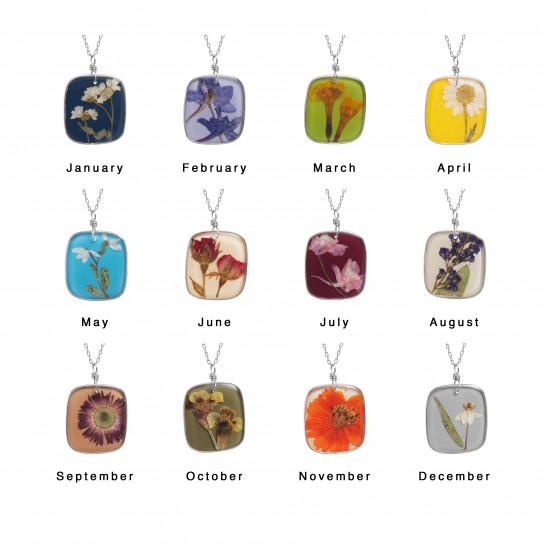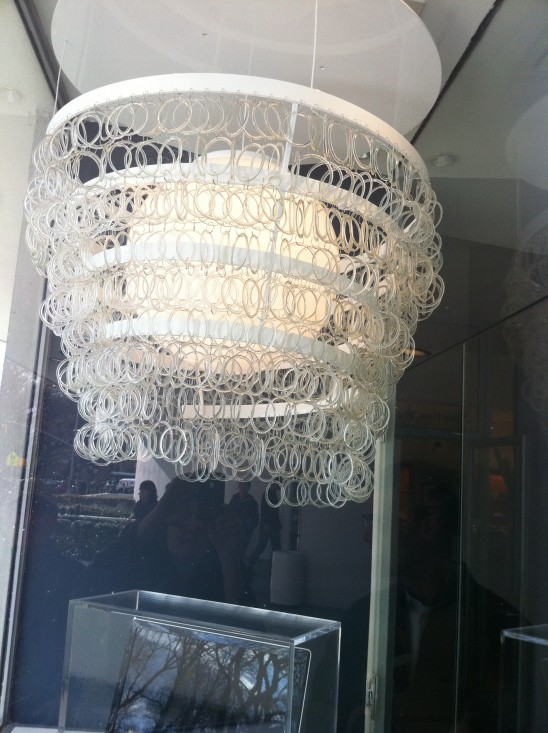Imagine that you’re walking along the beach on a gorgeous sunny day when something shimmery in the wet sand catches your eye. At first you think it might be a rock, still glistening from the tide that washed it in. But as you get closer, you see that it’s really more of a gem. Not a gem in the precious stone sense, but in that “Wow, I just found something really special!” way. It’s sea glass–the smooth, frosty product of broken glass left to tumble in the waves.
Collectors scavenge the shores to find these tiny treasures, and some creative beachcombers even turn bits of found sea glass into beautiful jewelry pieces. Since we recently expanded our own collection of sea and beach glass designs, we decided to learn a little more about the glass “gems” at the center of these wearable works of art. Read on for a few of the uncommon facts we found about sea glass.
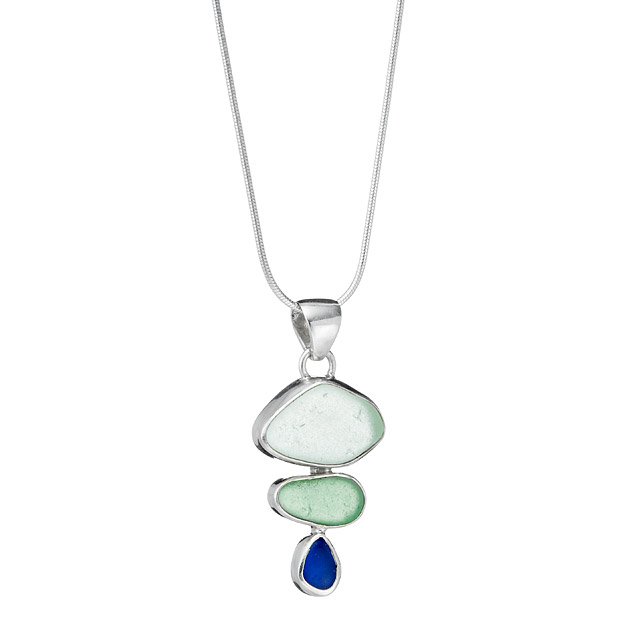
Sea Glass Trio Bezel Necklace by Carla Garro

